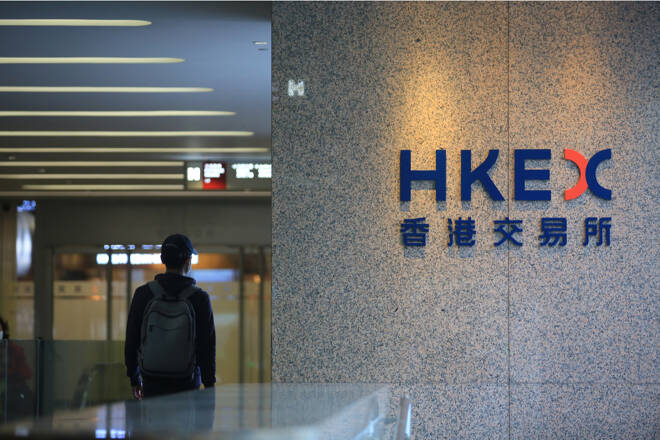Advertisement
Advertisement
Hang Seng Index, ASX 200, Nikkei 225: US Inflation Numbers to Offer Early Support
By:
Key Points:
- The Asian equity markets had a mixed Thursday session, with the ASX 200 ending the session in positive territory while the Hang Seng Index and Nikkei saw red.
- Overnight US inflation numbers and US equity market gains will likely set the tone for the Friday session.
- The Asian economic calendar also warrants investor attention.
Overview of the Thursday Session
On Thursday, the ASX 200 ended the day in positive territory, while the Hang Seng Index and the Nikkei ended the session in the red.
FOMC members Raphael Bostic, Susan Collins, and Fed Vice Chair John Williams created uncertainty about an H1 2024 Fed rate cut. Bostic expected a rate cut in the summer. Collins and Williams favored rate cuts later in the year. However, all three noted that the Fed is data dependent vis-à-vis rate cuts.
US GDP numbers from Wednesday had a limited impact on investor sentiment. According to 2d estimates, the US economy grew by 3.2% in Q4, down from the first estimate of 3.3%.
On Wednesday, the Nasdaq Composite index declined by 0.55%. The Dow and S&P 500 fell 0.06% and 0.17%, respectively.
Economic data from Australia and Japan drew interest on Thursday. Retail sales figures from Australia tested bets on an H1 2024 RBA rate cut.
Industrial production and retail sales figures from Japan sent mixed signals. Significantly, industrial production tumbled 7.5% in January, highlighting a deteriorating demand environment. However, inflation and retail sales numbers fueled bets on an April BoJ pivot from negative rates. A weaker USD/JPY left the Nikkei in negative territory.
Bank of Japan commentary contributed to Yen gains. BoJ Board member Hajime Takata discussed ending ultra-loose monetary policy, aligning with bets on an April BoJ pivot.
US Personal Income and Outlays Report in Focus
On Friday, overnight US economic indicators from Thursday will impact market risk sentiment.
The Core PCE Price Index increased by 2.8% year-on-year in January after rising by 2.9% in December. Softer inflation numbers suggested continued success in the Fed taming inflation. However, personal income jumped by 1.0% while personal spending rose by 0.2%. The pullback in spending could further dampen demand-driven inflation.
On Thursday, the Nasdaq Composite Index gained 0.90%. The Dow and S&P 500 ended the day up 0.12% and 0.52%, respectively.
The US inflation and personal income/spending numbers will set the tone for the Friday session. However, investors must consider the Asian economic calendar.
Finalized manufacturing PMI numbers for Australia and Japan need consideration. Unemployment and consumer confidence figures from Japan may also influence bets on a BoJ pivot from negative rates. Upbeat figures could pressure the USD/JPY and the Nikkei.
However, private sector PMIs from China will likely impact market risk appetite more. The numbers are out before lawmakers meet in Beijing next week to discuss economic forecasts and policy. Economists forecast the all-important Caixin Manufacturing PMI to fall from 50.8 to 50.7 in February.
Central Banks and the Futures Markets
Beyond the economic data, investors must consider central bank commentary and stimulus chatter from Beijing.
On Friday, the ASX 200 and the Nikkei futures were up 20 and 50 points, respectively.
ASX 200
The ASX 200 gained 0.50% on Thursday. Tech stocks had a positive session. The S&P ASX All Technology Index (XTX) rallied 1.47%, extending its winning streak to eight sessions. Gold and retail stocks also contributed to the gains.
Gold (XAU/USD) stocks Northern Star Resources Ltd. (NST) and Evolution Mining Ltd. gained 1.82% and 2.43%, respectively.
Harvey Norman Holdings Ltd (HVN) rallied 4.43% on better-than-expected earnings and a positive outlook.
However, banking, mining, and oil stocks had a mixed Thursday session.
The Commonwealth Bank of Australia (CBA) and Westpac Banking Corp. (WBC) ended the day up 0.39% and 0.57%, respectively. ANZ Group Holdings Ltd (ANZ) and National Australia Bank Ltd. (NAB) declined by 0.11% and 0.12%, respectively.
BHP Group Ltd (BHP) and Fortescue Metals Group Ltd. (FMG) fell by 0.05% and 0.27%, respectively. Rio Tinto Ltd. (RIO) rose by 0.32%.
Woodside Energy Group Ltd (WDS) gained 0.63%, while Santos Ltd (STO) declined by 0.14%.
Hang Seng Index
On Thursday, the Hang Seng Index had a choppy session before ending the day down 0.15%. Tech and property stocks limited the downside. The Hang Seng Tech Index (HSTECH) and the Hang Seng Mainland Properties Index (HSMPI) gained 0.14% and 0.44%, respectively.
Alibaba (9988) slid by 1.82%, while Tencent (0700) gained 0.07%. News of cloud price cuts left Alibaba in the red.
Bank stocks also had a mixed session. HSBC (0005) and China Construction Bank (0939) ended the day up 0.84% and 0.21%, respectively. Industrial Commercial Bank (1398) declined by 0.49%.
The Nikkei 225
(Graph for reference purposes only)
The Nikkei declined by 0.11% on Thursday.
Bank stocks had a positive session. Sumitomo Mitsui Financial Group Inc. (8316) and Mitsubishi UFJ Financial Group Inc. (8306) rose by 0.41% and 1.38%, respectively.
However, the main components of the Nikkei had another mixed session.
Tokyo Electron Ltd. (8035) gained 1.04%. Fast Retailing Co. Ltd. Sony Group Corp. (6758) ended the day up 0.12% and 0.19%, respectively. KDDI Corp. (9433) ended the session flat.
Softbank Group Corp. (9948) declined by 1.46% on regulators blocking the NVIDIA (NVDA) and ARM Holdings (ARM) deal.
For upcoming economic events, refer to our economic calendar.
About the Author
Bob Masonauthor
With over 28 years of experience in the financial industry, Bob has worked with various global rating agencies and multinational banks. Currently he is covering currencies, commodities, alternative asset classes and global equities, focusing mostly on European and Asian markets.
Advertisement
